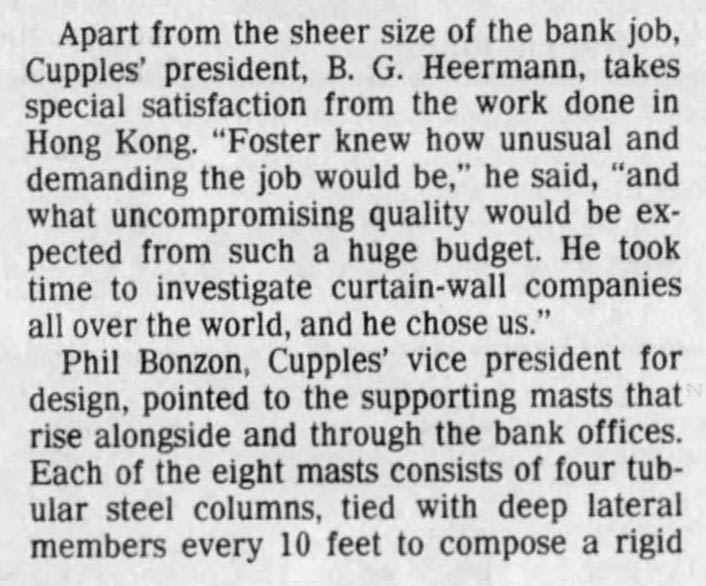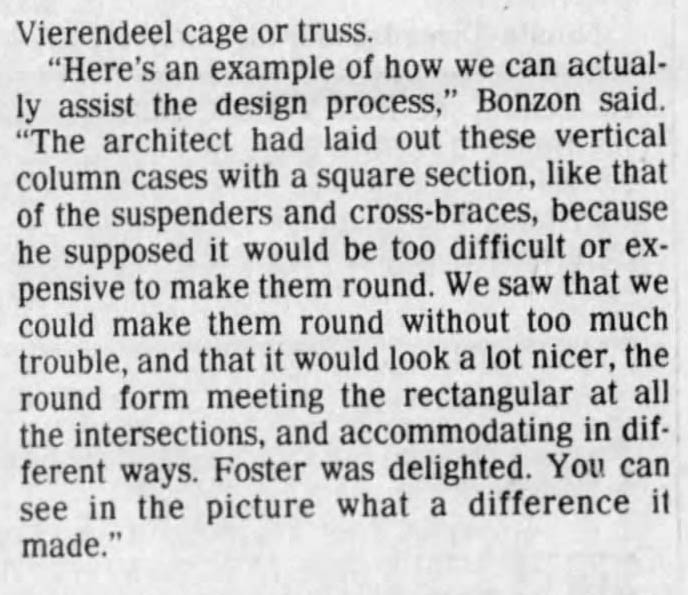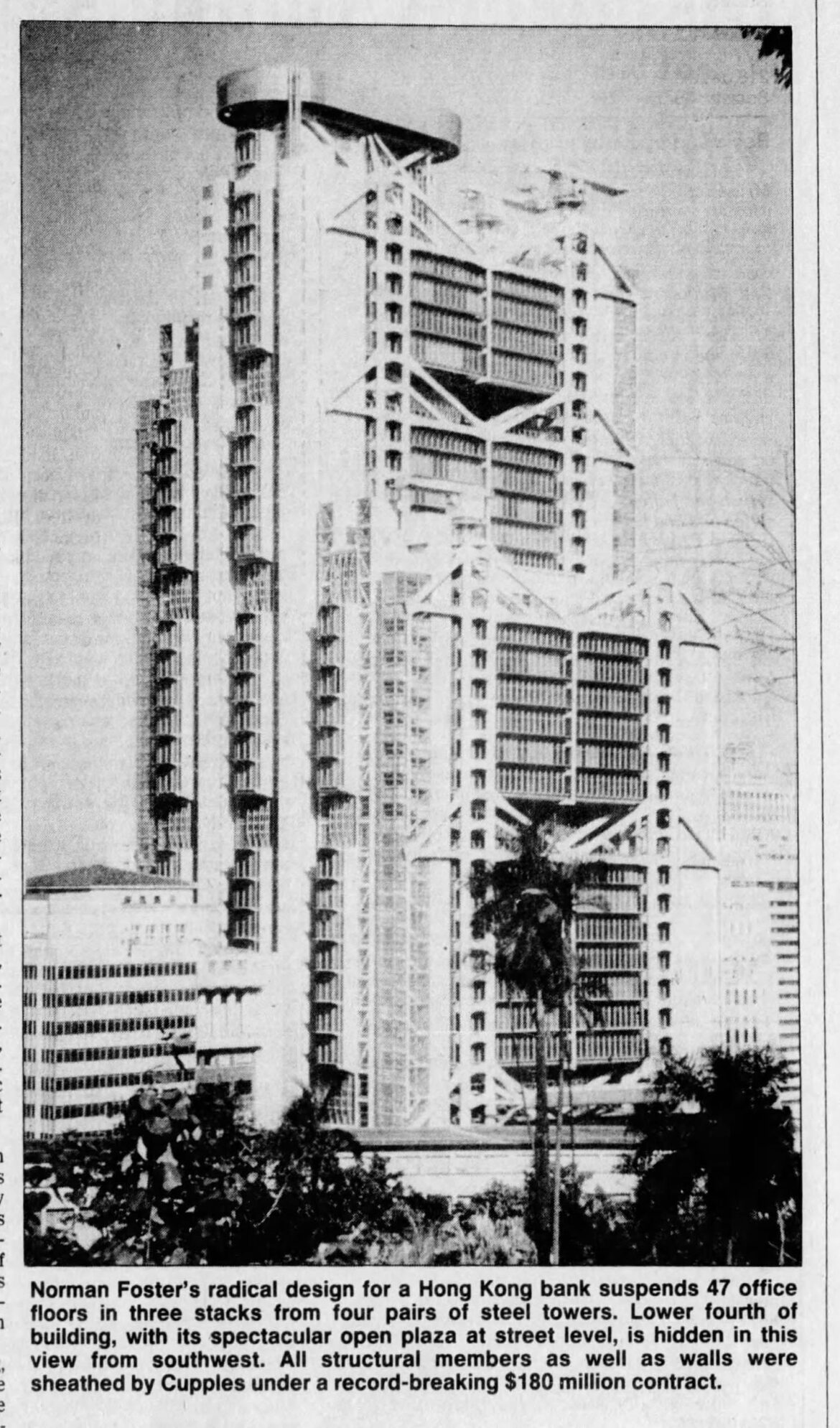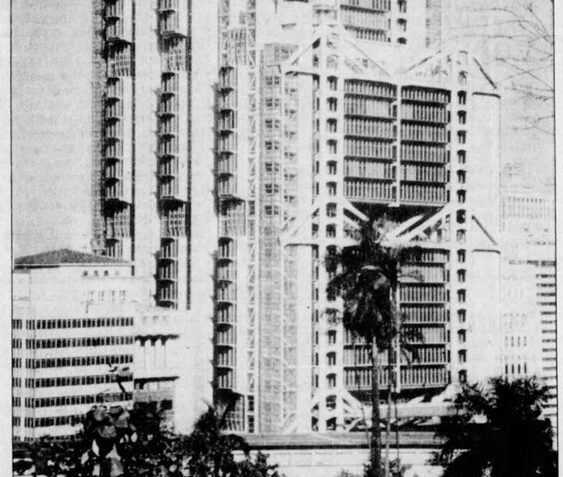In my previous post about the Air Force Academy Chapel, mostly fabricated at two Maplewood companies, Mississippi Valley Structural Steel and Cupples Products Company, I expressed regret that while researching my first Maplewood history book I had not been able to interview anyone who worked at either of those places. That turned out to be a good thing to mention as it was seen by the son of a man who had worked at Cupples. His name is Robert Myers.







I had a nice conversation with Mr. Myers. He was very familiar with the manufacturing done at Cupples during the time he worked there – 1964-1993 or 4. I wondered how much of the fabrication of the curtain walls was done at the company’s location on Hanley and how much was farmed out? I was amazed to find that apparently everything was done on Hanley. Aluminum was the metal that was used the most. Some jobs required stainless steel. Not much at all was done with ordinary steel.
They received sheet stock and thirty and forty foot logs of aluminum from Alcoa. The logs were melted and used to make all of their own extrusions. The extrusions were then made into modular assemblies that would carry the glass or granite or whatever type of exterior the architect had specified. Some of the assemblies were anodized which is an electrochemical process that converts the metal surface into a decorative, durable, corrosion-resistant finish but most were painted. Mainly they had three colors, light (311), medium (315) and dark brown (335).
For those of you familiar with the Cupples buildings, the tallest one was somehow used for a process to treat the aluminum. They may have dipped the sheets in water and hung them in that tower. A picture of this building is in my previous post.
This company began in 1947 making residential Cupco brand windows. By 1960, they had a 16 percent share of the curtain wall business in the US. That’s only 13 years. That is truly incredible! I have to wonder who was behind that rapid and successful transformation?
What I learned from the article above was that Cupples employees also handled the installation of the curtain walls. Wow! Try to imagine what that involves on the tallest buildings in the world! How many employees did it take to install the curtain walls on the World Trade Center buildings? Who managed that? I would love to talk to someone who had worked on one of those jobs.
Somehow the owners and operators of the Cupples Products Company transformed the manufacture of their small extruded aluminum window frames for residences into the largest and strongest of this type of frame to completely cover a huge number of commercial buildings including some of the tallest in the world. And it didn’t take them that long to do it! That’s phenomenal!
Special thanks to Frank Peters who wrote this article for the St. Louis Post-Dispatch and Bob LaRouche who took at least one of the photographs.
Doug Houser April 20, 2021


To all,
My dad John (Jack) Schnettler worked with Cupples for his career retiring in the late 1980’s. Most of his time was in St. Louis with stints in Dallas (1958-1963) and Singapore (several years in the 1980’s.). He worked on many of the firm’s signature projects, interfacing between the plant and the job sites. He loved the people and the work.
My dad Melvin Nesslage was a rip saw worker at Cupples. He cut a large quantity of angles of aluminum for many of the historical buildings. The one that sticks out in my mind is the Airforce Academy Chapel in Colorado. My mother has more interesting stories. She is 92 but has a great memory.
Cupples is the Curtain Wall exterior. That is the Glass and Metal that was the cladding used on the Twin Towers in New York, NY, Cupples is the major manufacturer in the world.
Sue, Quite correct. The AFAC chapel was fabricated in Maplewood. I would love to hear some of those stories from your mother. Thanks for your comment.
My Dad, Robert Fennell, worked at the Cupples Plant in Maplewood for several years. His job ended when he was walking home from work and, for a short cut on the walk, he crossed a railroad trestle. He told us he must have been day dreaming because something made him look back and that’s when he saw a train coming. It was too close for him to finish the crossing so he jumped and hit whatever was in his way on the way down. He broke several ribs and was unable to return to work.
Hey Nancy, he was probably doing something he had told his children to never do. Isn’t that the way it goes. Sorry to learn about his accident but we know that he recovered. As always, thanks for another of your very many contributions.
Phil Bonzon is still around. In 1984 I was in Hong Kong, and got to go up on the skeleton of the Bank of Hong Kong and Shanghai building. We went up 44 stories on a packed elevator; all the scaffolding was bamboo; the 850′ foot ship on which I had arrived looked like a bathtub toy in the harbor below.
The expensive building was a testament to the company’s confidence (perhaps misplaced) in Hong Kong’s post-1997 future.
This is all very interesting to me, Charles. I can’t imagine bamboo scaffolding that high. That must have been a sight. I’m assuming you were working for Cupples. Who is Phil Bonzon and how could I contact him? Thank you for your comments. Any other memories of your experiences with Cupples that you would care to share, we’d love to hear.
I had long wondered about the Cupples building and what it did. I recall seeing truckloads of steel and the parking lot full of cars of employees. Never did I imagine that out of Maplewood would come such products and that we sent folks all over the world to install them. Surely there are still some folks around to tell those stories.
Was either of the two towers that went down on 9/11 built by Cupples. I recall seeing the rubble and steel structure but never thought about where they might have come from.
Yes, Cupples did that curtainwall.
My father worked on the Air Force Academy Chapel. He had to go up there to make some adjustments and was there for some time while I was a child. My Uncle worked in the high tower you describe and he told me it was as deep as it was tall.
Hi Martha, If there is any one that worked on the AFAC, that is still alive they would have to have been very young at the time. It was constructed 60+ years ago. I wonder what is in the Cupples tower today? Perhaps I’ll drop by and see if someone can give me a tour. Thank you very much for your comments.